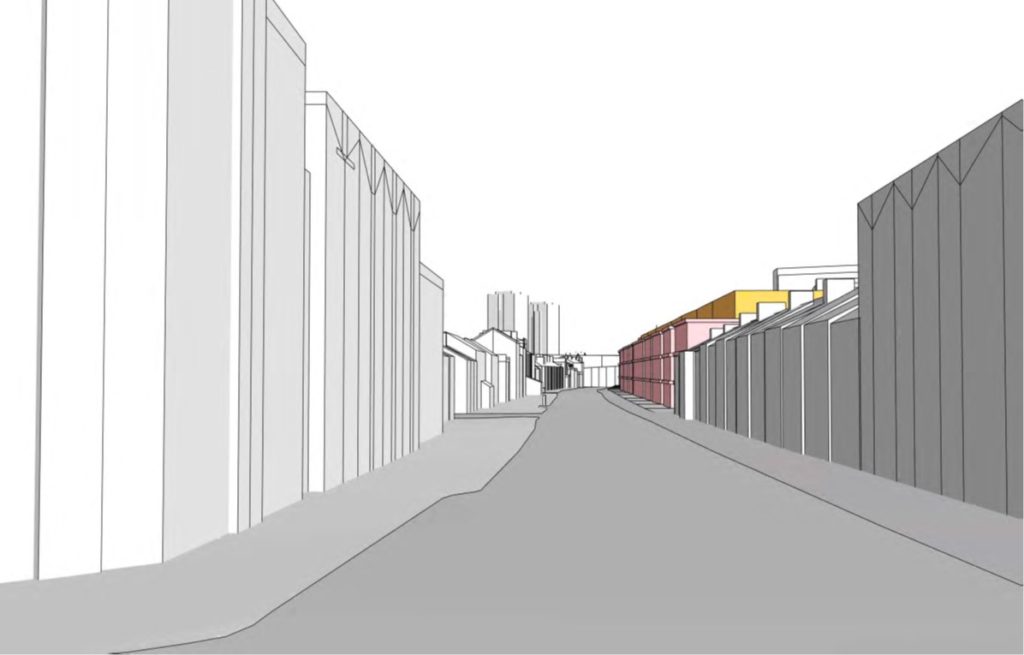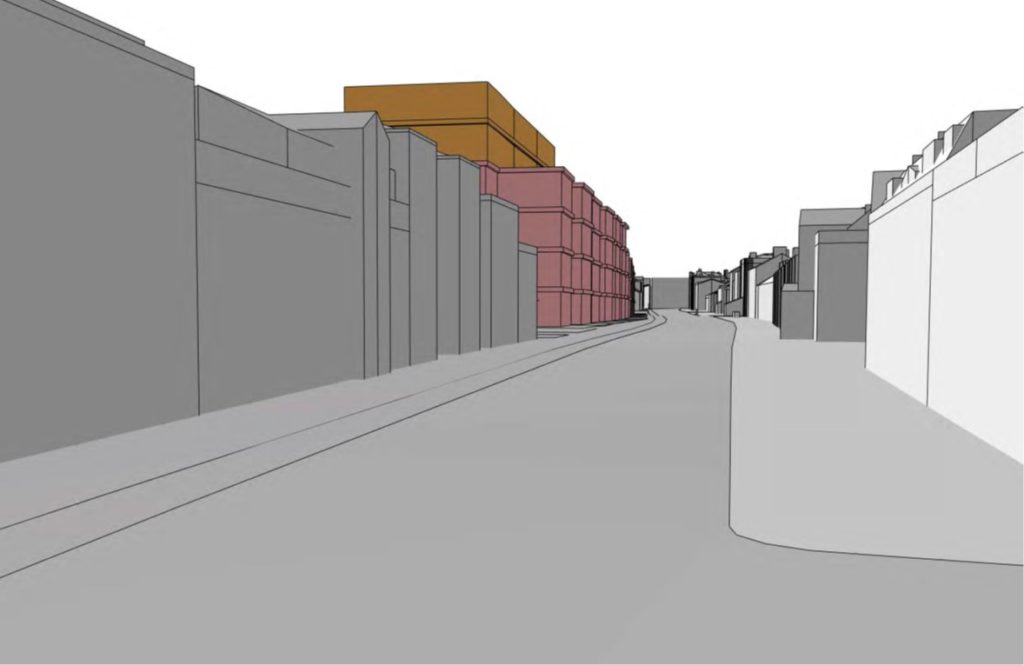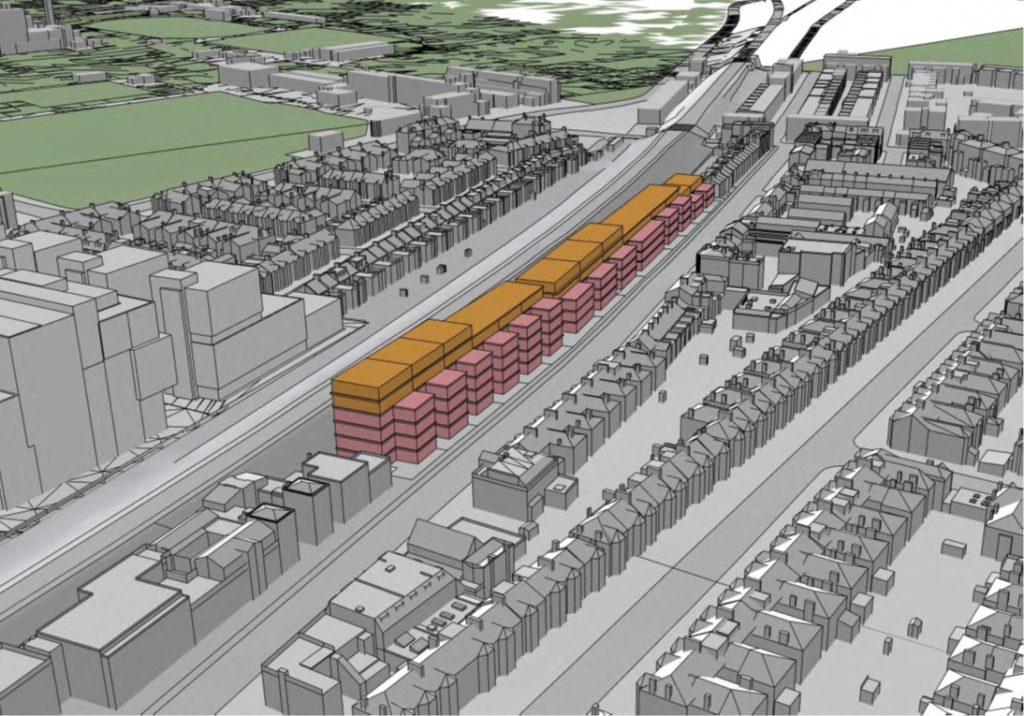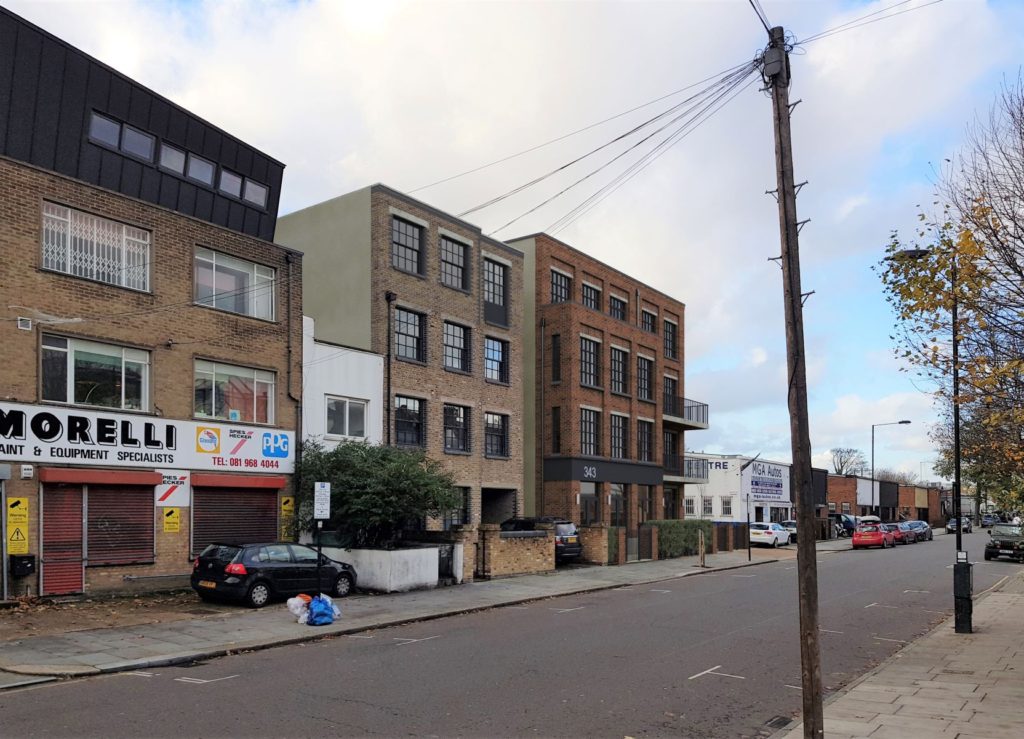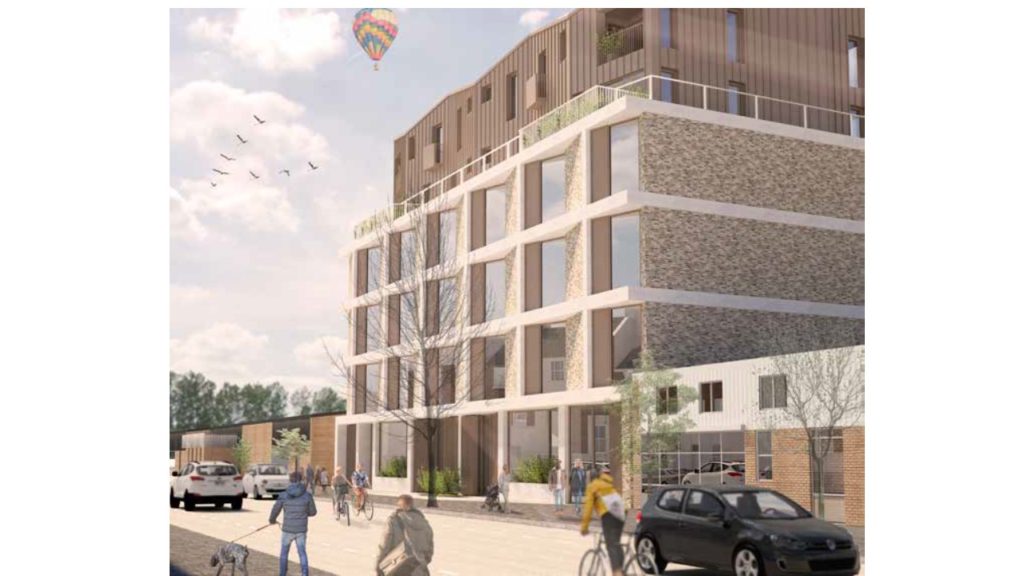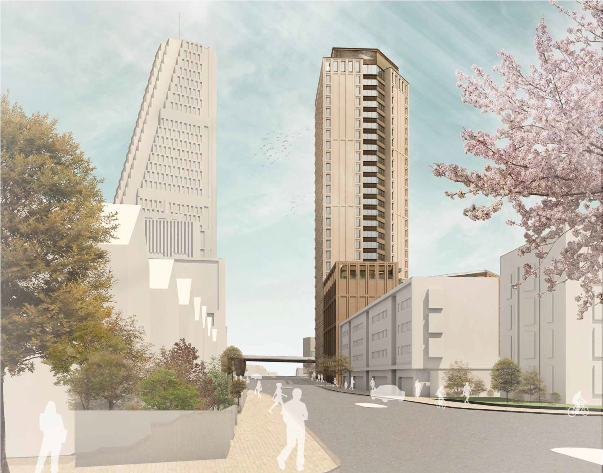The Old Oak and Park Royal Development Corporation is a body set up by the Mayor of London. In April 2015 the OPDC took over planning powers from three London Boroughs, for the large ‘Opportunity Area’ that stretches from Park Royal in the west to Wood Lane in the east.
Our Forum has taken a close interest in the actions and decisions of the OPDC, over the past 4 years. The Mayoral plans for the area (which dates from Boris Johnson’s era as Mayor) are to create 24,000 new homes at Old Oak, and 65,000 new jobs. This is London’s largest regeneration area, and is on North Kensington’s doorstep.
The OPDC is run by a Board of individuals appointed by the Mayor. Although these include the Leaders of the three Boroughs involved (Brent, Ealing and Hammersmith & Fulham) the Corporation has never felt sufficiently accountable to local people.
Back in 2015 the StQW Forum worked with residents groups in and around the Old Oak area to set up an Old Oak Neighbourhood Forum (OONF). Both StQW and OONF have since questioned and challenged the more extreme proposals that have emerged within the Draft Local Plan that has been prepared by the Corporation. The website of OONF at www.oldoakneighbourhoodforum.org gives information on the long series of consultations on the OPDC Draft Local Plan.
This is not a battle between NIMBY residents resisting change, versus a development corporation trying to meet London’s housing needs. Old Oak needs redevelopment, but in the form of good quality and livable homes for all generations.
The local opposition to OPDC proposals is part of a wider debate about planning the future of London. Recent research by the Grosvenor Estate shows the extent to which any public trust in the motives of developers and the decisions of local planning authorities has largely disappeared.
This post gives details of an extended exchange of correspondence between the StQW Neighbourhood Forum and the Chair of the OPDC Board, Liz Peace CBE.
The Forum’s concerns about the governance arrangements at the OPDC date back many months. Some of the detail in our letters may seem trivial and an example of local residents nitpicking at a successful public body. We see the issues raised in this correspondence as indicators of deeper institutional failings and an organisational culture resistant to outside challenge.
We also see a pattern in which OPDC and the Mayor of London’s Office have reacted – belatedly and after the event – to comments and questions on the Corporation’s governance arrangements and its level of transparency with the public. The resultant improvements to governance have come only after external prompting – from London Assembly Members, from landowner Cargiant, and from ourselves.
As a Mayoral Development Corporation, the OPDC is subject to most of the governance and transparency requirements that apply to a London Borough Council. Board members and OPDC officials do not always seem familiar with these.
In recent weeks the London Assembly has held two sessions at which OPDC Board Chair Liz Peace and OPDC Interim Chief Executive David Lunts have faced serious questions about the overall approach adopted by the Corporation at Old Oak. The most significant of these relate to the financial risks to the GLA as parent body, and to all Londoners whose Council Tax precepts fund the Mayoral ‘family’ of London-wide bodies.
Our first letter to Liz Peace on the subject of OPDC’s governance dates from October 2018. The well publicised scandal at Westminster City Hall, where the Chair of the Planning Committee had accepted excessive hospitality from developers, had rung alarm bells. A subsequent independent investigation revealed a similar culture within Westminster’s Planning Department of officers routinely accepting hospitality from the several specialist lobbying firms and planning consultancies which have become a feature of the London development industry.
We also wanted to know more about how the OPDC operates its pre-application advice service to developers, and how often it uses Planning Performance Agreements.
The reply from Liz Peace (dated 29th November) answered some but not all of our questions. On December 22nd 2018 we tried a further request with a list of specific questions. These covered the use of Planning Performance Agreements on named schemes that had been granted planning permission, queries on the OPDC Code of Conduct, on the nature of the ‘application files’ held by OPDC, and the extent to which individual planning officers take the lead on lengthy pre-application negotiations while subsequently writing reports and recommendations for the OPDC Planning Committee (with the risk of ‘capture’ by developers, an issue which has caused public concern elsewhere in London).
A further reply from Liz Peace came on 29th January 2019, with apologies for the delay. This explained that 7 of the 9 major applications approved by OPDC had been the subject of Planning Performance Agreements, and that the officer conducting these negotiations was indeed normally the author of the subsequent recommendations to committee.
OPDC promised to remedy the fact that some of the Registers of Interest of Planning Committee members had not appeared on their website. Liz Peace also acknowledged that the OPDC website was not clear about the use of PPAs and what is involved in this form of (costly) pre-application advice paid for by developers. More information has since been added to the OPDC website.
On March 22nd 2019 we wrote again to Liz Peace. This letter was prompted by the news that David Lunts, the GLA’s Executive Director of Housing and Land, has been appointed as a part-time Interim Chief Executive at the OPDC. Recruitment of a new chief executive had been triggered by the departure of Mick Mulhern, the former Director of Planning at OPDC who had himself been acting up as as chief executive ever since the departure of Victoria Hills in early 2018.
We questioned whether there might be a conflict of interest between the role at the GLA of David Lunts in promoting GLA land assembly and regeneration projects, while also heading up OPDC as a statutory planning authority making objective and neutral decisions on major applications.
Our misgivings about OPDC operating as a combined ‘delivery body’ and planning authority were sharpened by a letter sent by Mr Lunts to the Planning Inspector responsible for examining the OPDC Draft Local Plan. It felt to us that roles were becoming blurred.
Our letter also followed up on a list of negative perceptions of how OPDC was ‘engaging’ with local residents. These were drawn from the views of members of the Old Oak Neighbourhood Forum and the Grand Union Alliance, and had been discussed in February at a meeting between Liz Peace and Henry Peterson (StQW Forum chair and volunteer adviser to the Old Oak Neighbourhood Forum).
The next reply from Liz Peace was dated 24th April and gave assurances that there were clear divisions between the ‘delivery arm’ of OPDC and its role as planning authority. It is notable that after this letter was sent the OPDC Board on 30th May 2019 agreed a new protocol for staff aimed at ensuring that this separation of roles is maintained.
On 7th May, a further letter from the Forum focused mainly on the OPDC’s approach to community engagement. In autumn 2018 the membership of the OPDC Board had been ‘refreshed’. Certain members (including the one individual appointed in 2015 as the sole ‘community board member’) were not re-appointed for a further 3 year term.
Three new Board members had been appointed, following adverts for these positions. OPDC and the Mayor’s Office were sending out confusing and contradictory messages about the community links and ‘representative’ role of these individuals. The view of OONF was (and remains) that none of these individuals have yet made efforts to learn about the views and concerns of local people, ten months into their term of office.
Liz Peace responded on 7th June. This letter said that some further gaps in information on the OPDC website, relating to Registers of Interest of Board members and the OPDC Gifts and Hospitality Register were being remedied. On the question of the OPDC’s community engagement activities, differences of view remained as previously.
Requests for more information about the OPDC’s ‘masterplan’ for Old Oak North, in several of the StQW letters, had been met with promises of consultation sessions ‘in the summer’. By June 2019, GLA Assembly members were asking questions on the same subject. In particular, there was concern at the almost complete lack of information on the content of the GLA’s application to Government for £250m of Housing Infrastructure Funding to finance preparatory works at Old Oak North.
First applied for back in September 2017, this funding was finally approved by Government in March 2019. London Assembly Members wanted to know how these funds would be spent. It also emerged at a session of the Assembly’s Budget and Performance Committee on June 11th that this £250m grant award remains subject to a series of ‘challenging’ conditions. The GLA is being expected to underwrite the risk that these conditions (which also remain confidential) may never be met.
The planning context for Old Oak was meanwhile changing fast. In February, landowners Cargiant had announced that they were abandoning their plans for major redevelopment of their site as a housing-led scheme for ‘Old Oak Park’. This called in question the viability and realism of OPDC’s housing targets for the area.
Cargiant called for an immediate halt to further spending and consultant appointments and a full inquiry into the spending and strategy of the OPDC before any more money is wasted and jobs are lost. There is no sign of such an inquiry happening, although the London Assembly is now scrutinising the OPDC more closely and the Mayor is being asked more questions by Assembly Members.
Following the Plenary session of the Assembly on July 4th, at which Liz Peace and David Lunts answered further questions from Assembly Members, the StQW Forum wrote again on July 9th with queries about the HIF application and the conditions applied to this Government grant. A month later, there has been no response to this letter.
The Old Oak Neighbourhood Forum has been pursuing a FoI/EIR request for sight of the HIF bid since last March. This has been resisted by OPDC and GLA and a further appeal is in progress. London Assembly Member Caroline Pidgeon has also asked the Mayor why this document, passing between regional and central government, has not been made public? She has been given the same inadequate answer as sent to the Old Oak Neighbourhood Forum.
The Mayor’s Office seem to be waking up to the fact that the OPDC is under closer public scrutiny with more and more questions being asked. These questions are coming from Assembly Members, from Cargiant, and from local groups including the StQW Neighbourhood Forum and the Old Oak Neighbourhood Forum.
As a result, a Mayoral Decision MD2502 on ‘Governance Directions’ for the two Mayoral Development Corporations was approved on July 29th 2019. The report states that these new governance requirements placed on the OPDC will provide an enhanced degree of scrutiny and accountability for the decisions and activities of the Corporation following its successful HIF bid. A series of new checks and conditions, involving endorsement by senior GLA officials on behalf of the Mayor, will in future apply to OPDC decision-making,
The covering report claims that these new measures result from an internal audit review of the OPDC’s ‘oversight and governance‘. No such review features in the regular progress reports from the relevant GLA internal audit team to the OPDC’s Audit and Risk Committee. So who knows what has prompted these new ‘Governance Directions’? Probably a combination of questions being asked from several directions.
In our latest letter of 9th August, we have chosen to write this time to GLA Executive Director Resources Martin Clarke. He is one of two senior officials at the GLA who will be responsible for ensuring that the new Governance Directions are observed by OPDC. As before we have copied our letter to Assembly Members from each of the political parties on the Assembly, and to Liz Peace and David Lunts at the OPDC.
As noted at the start of this post, the pattern that we see is of OPDC and GLA reacting to concerns raised with the OPDC Chair and/or Board members, but on each occasion after the event. The latest Mayoral Decision takes matters to a new level. The report claims that the internal audit review of OPDC governance arrangements found ‘audit assurance‘ of OPDC to be ‘substantial, the highest level‘.
We cannot agree with this conclusion, and believe that this GLA internal audit team (the prime function of which is to audit MOPAC the Mayor’s Office for Policing and Crime) is missing the bigger picture. Achievement of the original planning ‘vision’ for Old Oak now looks to be fraught with obstacles and uncertainties. The OPDC Local Plan has yet been found ‘sound’ and ‘effective’ with Planning Inspector Paul Clark having to assess major questions over viability. Much public money continues to be spent by OPDC in the meantime.
The OPDC has declined a suggestion from Cargiant for a 3 month pause to negotiate over landholdings. Meanwhile the Mayor has approved the drawdown of a further £10m of expenditure in this financial year by OPDC on preparatory work related to the HIF grant — the detailed content of which is still being kept from the public and the London Assembly.
With the HS2 project under review, an uncertain Brexit outcome, and London population forecasts on a downward trend, the justification for hyper-dense housing development at Old Oak is increasingly questionable. Local people want to see a new community at Old Oak that proves successful in the long-term as a sustainable new part of London.
We fear a repeat of other regeneration projects in the capital that have proved over-ambitious, misjudge the housing market, and leave new arrivals isolated in residential towers with poor public transport access and inadequate education, health and social facilities. We may be proved wrong, but this is the direction in which plans for Old Oak have been heading for the last 2 years.
